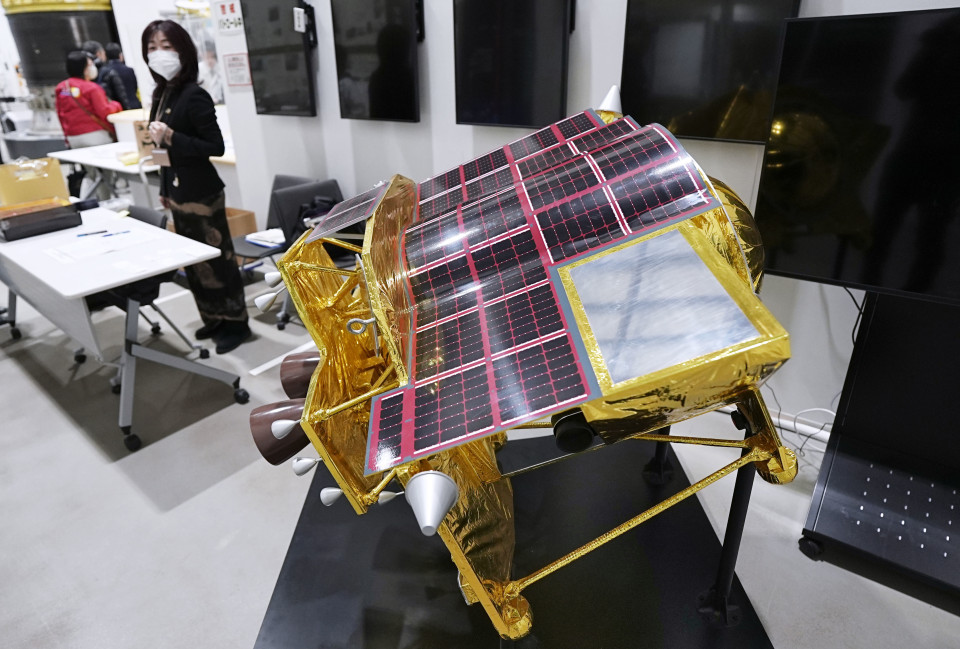Japan probe lands on Moon but with failed solar power generator

A Japanese spacecraft equipped with precision navigation technology has successfully landed on the Moon, but the fate of its mission is uncertain due to problems with its solar power generation system, the country’s space agency said Saturday.
With the touchdown of the Smart Lander for Investigating Moon, or SLIM, Japan has made its first lunar landing, joining the former Soviet Union, the United States, China and India as the only countries to have accomplished the feat.
“We believe it succeeded in making a soft landing” as data transmitted from the craft to Earth has so far suggested that most of the mounted equipment was working properly, Hitoshi Kuninaka, a senior official of the Japan Aerospace Exploration Agency, told a press conference.
But the lander’s solar power system was not working and its battery would last for only a matter of hours. JAXA officials said they suspect the built-in power generation system was not properly facing the sun and could begin to function once sunlight conditions change.
The spacecraft is designed to test technology for conducting pinpoint landings on the surface of gravitational bodies with unprecedented precision of less than 100 meters from intended targets, as opposed to previous Moon landers that have an accuracy of within several to around a dozen kilometers, according to JAXA.
Kuninaka said, “We believe we came close to 100-meter precision” with the landing, as the vehicle matched the expected trajectory and acceleration prior to touching down.
JAXA President Hiroshi Yamakawa said that while the agency would need a month to analyze the landing and exactly what happened to the spacecraft as it reached the lunar surface, Japan is ready to share relevant knowledge about the pinpoint landing technology through international cooperation frameworks.
The agency has said it is necessary to realize a transition away from an era of “landing where we can” toward one of “landing where we want” for future Moon missions, which could include searching for water, requiring pinpoint landings on uneven surfaces such as slopes.
Sharing the technology for such precise landings would enhance sustainable, long-term exploration of the Moon, Yamakawa told Saturday’s press conference.
Using SLIM, dubbed the “Moon Sniper,” the agency hopes to help unravel the origins of the Moon by carrying out a composition analysis of rocks believed to be part of its mantle.
The probe began the final stage of its landing mission around midnight Friday from a point around 15 km above the surface.
According to the agency, the vehicle can autonomously determine the best spot to land by taking photos of craters and surfaces during its descent and comparing them with imagery inputted in advance.
The spacecraft is designed to first land on one of its five legs and use the others after tipping over to stabilize its position.
The explorer was launched on an H2A rocket on Sept. 7 last year from Tanegashima Space Center in Kagoshima Prefecture, southwestern Japan. The spacecraft entered lunar orbit on Dec. 25.
Its launch was initially scheduled for around May last year but was delayed due to a failed liftoff of Japan’s next-generation H3 rocket several months earlier. It was postponed again in August due to the weather.




